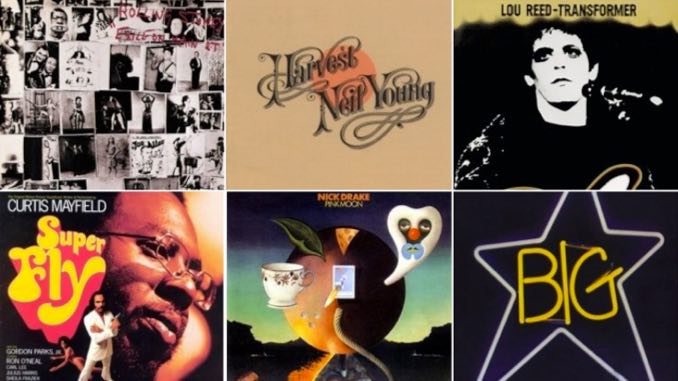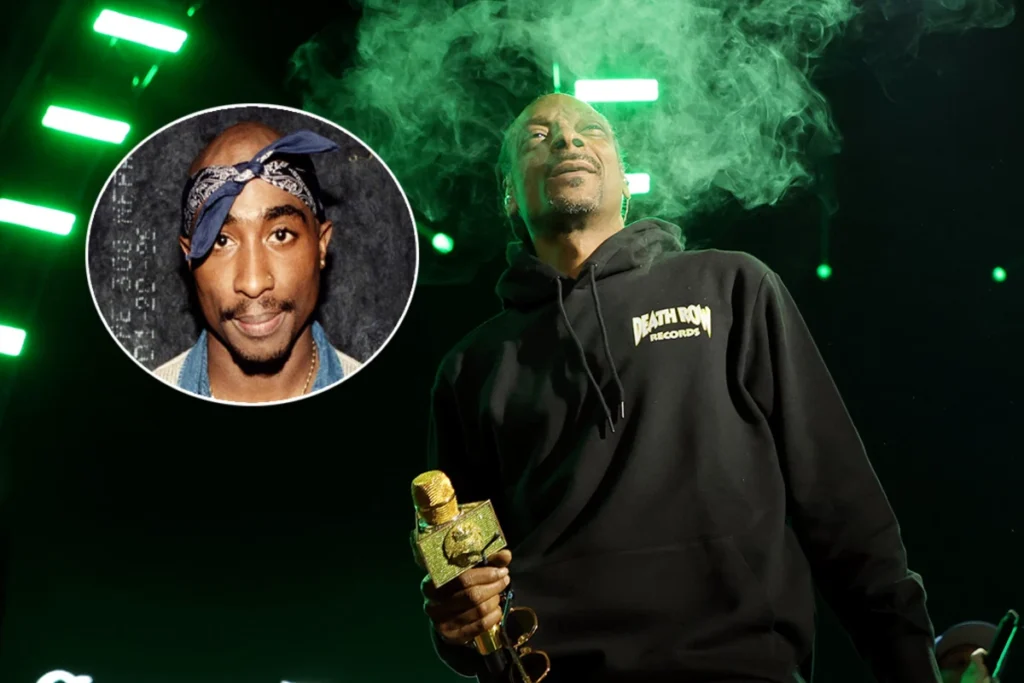As the ball dropped in Times Square to say goodbye to 1971, Bob Dylan was making a surprise appearance with The Band less than two miles away, an event that was captured on one of best albums of 1972. It was a banner year for live music—Paul McCartney returned to the stage for the first time since The Beatles’ 1966 tour; Pink Floyd unveiled their Dark Side of the Moon show; David Bowie began his Ziggy Stardust tour; and Simon & Garfunkel reunited for a George McGovern benefit. It was also a year for soul classics from Stevie Wonder, Bill Withers, Aretha Franklin, Curtis Mayfield and Al Green. A couple under-the-radar releases from Nick Drake and Big Star would go on to influence generations of artists. And The Rolling Stones released the last—and arguably best—in a series of four straight masterworks. We polled Paste’s music writers and editors to determine the 20 best albums of 1972, counted down below.
20. Joni Mitchell: For the Roses
If the first half of her career is marked by intentional folk output and the second by freewheeling jazz experimentation, For the Roses finds a determined Joni Mitchell somewhere in the middle. Vocally and lyrically, some of these songs (like album opener “Banquet” and the title track) wouldn’t be out of place on Clouds or Blue. But then we hear Mitchell build sonic elements on top of one another on tunes like the sensual hit “You Turn Me On, I’m A Radio,” and we’re reminded that Mitchell is still stretching her legs. Some of the songs were said to be inspired by Mitchell’s brief relationship with fellow singer/songwriter James Taylor. For the Roses is as elegant as anything Mitchell ever released, and, even when it leans into more casual soft-rock, you never forget that you’re listening to the one and only Joni Mitchell. —Ellen Johnson
19. The Band: Rock of Ages
By all accounts, the music of The Band was best consumed live, and Rock of Ages, the double-live album recorded over a series of shows at New York’s Academy of Music at the end of December, 1971, supports that idea. Kicking off with a blues-rock cover of the Holland-Dozier-Holland-penned Marvin Gaye single “Don’t Do It,” Robbie Robertson, Garth Hudson, Richard Manuel, Rick Danko and Levon Helm feed off each other’s energy, further buoyed by a five-piece horn section arranged by none other than Allen Toussaint and a special guest on three tracks, Bob Dylan. The tracklist reads like a Greatest Hits album, pulling songs like “The Night They Drove Old Dixie Down,” “Rag Mama Rag” and “The Weight” from their four studio albums. —Josh Jackson
18. Can: Ege Bamyasi
Drawing influences from everyone from Stockhausen to The Beatles, Can refined their wide range of influences on Tago Mago’s follow-up. The term “krautrock” never fully represented the Cologne collective’s musical breadth, but nevertheless Ege Bamyasi has become one of the sub-genre’s essential recordings. The seven-song record is tense and concise, requiring patience and understanding to fully embrace the group’s experimentalism. But once the allure of tracks like “One More Night,” “Vitamin C” and “Spoon” creeps in, there’s no turning back. —Max Blau
17. Yes: Close to the Edge
The early ’70s coincided with the peak years of prog-rock, that glorious era when rock bands embraced the compositional complexity of classical symphonies and albums with just three marathon-length songs could land on the Billboard charts. No band epitomized this creative peak better than Yes, whose string of albums in 1971 and 1972—The Yes Album, Fragile, and Close to the Edge—remains one of the greatest three-album runs in rock history. Following the career-best Fragile, Close to the Edge reflected the band’s ballooning ambition: Its labyrinth masterpiece of a title track encompasses 18 minutes and four movements, including a gorgeous organ-driven passage that spotlights Jon Anderson’s soaring countertenor voice. The remaining two tracks are hardly slouches: “And You and I” is one of Yes’s most majestic ballads, while “Siberian Khatru”—a regular opener during Yes’s increasingly elaborate tours—brings a funk-rock thump to the band’s sound. Prog would become a widely derided punching bag by the end of the ’70s, but Close to the Edge is an enduring testament to the genre’s transcendental possibilities. —Zach Schonfeld
16. Aretha Franklin: Young, Gifted and Black
The Queen of Soul would win her seventh Grammy for Young, Gifted and Black, taking home the Best Female R&B Vocal Performance award in recognition of her 18th studio album. Inspired by Nina Simone’s 1969 tribute to late A Raisin in the Sun playwright Lorraine Hansberry, and released at the peak of Aretha Franklin’s career, Young, Gifted and Black is itself a testament to the “lovely precious dream” that Simone sang about, and that both artists embodied. Franklin’s uplifting rendition sits alongside covers including Otis Redding’s “I’ve Been Loving You Too Long,” The Beatles’ “The Long and Winding Road” and Elton John’s “Border Song (Holy Moses),” yet Franklin—aided by producers Tom Dowd, Arif Mardin and Jerry Wexler, not to mention performers Donny Hathaway, Chuck Rainey and Cornell Dupree—swaths each song in triumphant gospel and soul sounds, building a monument to Black pride and joy amidst the political tumult of the early ’70s. And that same light shines from indispensable Franklin originals “Day Dreaming” and “Rock Steady,” which themselves have been covered by dozens of artists in the years since this masterwork’s release. —Scott Russell
15. Roxy Music: Roxy Music
Without Roxy Music, we wouldn’t have Devo, Arcade Fire or Radiohead. They were a North England band full of Bowies who harnessed every absurd influence and turned grab-bag albums magnetic and conceptual. Their sensational sophomore output, For Your Pleasure (1973), is a touchstone of art rock, but that flawless, profound mania germinated a year earlier on the band’s eponymous debut. One of two projects that would feature the balding, electric boogaloo of Brian Eno, Roxy Music is a raw piece of magic artists are still fascinated by. The tracklist is auspicious and brimming with inspiration from film (Casablanca, Brief Encounter, Battle of Britain) and the sounds of postmodern, Western popular culture. “Virginia Plain” is as glamorous as the band would ever get, while “Re-Make/Re-Model” features solos akin to “Day Tripper” and “Ride of the Valkyries” going through prog-rock osmosis. When the band was putting “Ladytron” together, vocalist Bryan Ferry asked Eno for an arrangement that sounded like the moon landing. As founding member Andy Mackay sharply pointed out, Roxy Music didn’t invent eclecticism, but forced rock and roll to accommodate it. —Matt Mitchell
14. Randy Newman: Sail Away
Randy Newman’s third album Sail Away plays out like a collection of standards for the ugly moments in human history that pop music wasn’t willing to touch in the past. He gives his sales pitch of America as a slave trader to a not yet captured slave in the album’s title track. On “Old Man,” he reassures his dying father that even though no one is coming to his bedside in his final moments, that there won’t be a “God to comfort” him after he takes his final breath. Elsewhere, he explains there actually is indeed a God in “God’s Song,” he just chooses to sit back and enjoy the confusion he causes down here on Earth. Look no further than the nuke first, ask questions later of his classic satire “Political Science” for evidence of Newman’s low faith in America as a unifier. The album’s arrangements also point to a refinement of his ability as a composer to meld piano balladry with both rock and influence from the great American songbook. This combination has helped him become known to most as one of the most in-demand film composers working today. But if you dig further back from his family-friendly work in Pixar films, you’ll find a man ready to call bullshit on the thought of a fairytale ending. His sly wit had always been the concealed dagger by his side on earlier albums, but it wasn’t until Sail Away that Newman became one of music’s most astute breakers of bad news. —Pat King
13. Steely Dan: Can’t Buy a Thrill
Donald Fagen and Walter Becker, a pair of smart and smart-ass college pals, never understood why ambitious lyrics were always paired basic blues changes and sophisticated music with verbal cliches. What if you combined the texts of Bob Dylan and William Burroughs with the pop hooks of Paul McCartney and the charts of Duke Ellington? Fagen and Becker adapted Burroughs’ description of a dildo as a band name and set stories of hitmen, dominatrixes and street hustlers to sumptuous music on this debut disc. This resulted in two pop hits, the #6 “Do It Again” and the #11 “Reelin’ in the Years.” This was the last time Fagen would share the lead vocals, and greater glories lay ahead. —Geoffrey Himes
12. Bill Withers: Still Bill
The groove of “Lonely Town, Lonely Street” that opens Bill Withers’ second album showed right off the bat that the singer could deliver the funk just fine without Booker T. Jones, the producer of his breakout debut Just As I Am, at the helm. Co-produced by Withers and the musicians of the Watts 103rd Street Rhythm Band, the understated Still Bill features a trio of Side One singles that showcases Withers’ range: the slow-grooving blues of “Who Is He (And What Is He to You)?”; the funky, sexy “Use Me”; and soul standard “Lean on Me.” The latter was inspired by the tight community he was missing after moving from coal-mining West Virginia to Los Angeles. Withers’ songwriting is sharp throughout, knowing when to keep things simple and when to dig deeper. —Josh Jackson
11. Townes Van Zandt: The Late Great Townes Van Zandt
Townes Van Zandt’s third album was also his third release in two years. Like its predecessors, this one didn’t sell many copies, but it included two of the best American-roots songs ever written, two tunes that would eventually become top-three country singles for other singers, two numbers still sung today wherever there are acoustic guitars at hand. “If I Needed You” (a #3 hit for Emmylou Harris and Don Williams) and “Pancho & Lefty” (#1 hit for Willie Nelson & Merle Haggard) are miracles of craftsmanship with never a wrong move nor an unneeded word. “Snow Don’t Fall” is almost as good, but the three cover songs and the impersonations of Bob Dylan and J.R.R. Tolkien are less memorable. —Geoffrey Himes
10. Stevie Wonder: Talking Book
A high point of Stevie Wonder’s “classic period,” Talking Book is a titanic work of funk and soul that bridged the gap between the stardom of Wonder’s youth and the truly visionary artistic output that was to follow. This album merely living up to its biggest hit—centerpiece “Superstition,” one of the most irresistible grooves ever committed to tape—would have been a minor miracle in itself, but Talking Book does so much more, as Wonder pairs the all-encompassing expression of his songwriting with the bold experimentation of his instrumentals. Songs like “You And I,” a romantic ballad accented by Wonder’s beloved TONTO synthesizer, demonstrate his ability to wring a dazzling spectrum of sound from his keyboard, while his co-writes with Syreeta Wright—whom he would amicably divorce that same year—and singer/songwriter Yvonne Wright (no relation) imbue that sound with palpable emotion. It all comes together on closer “I Believe (When I Fall in Love It Will Be Forever),” a psych-funk love song for the ages. —Scott Russell
9. David Bowie: The Rise and Fall of Ziggy Stardust and the Spiders from Mars
It’s an end of days story, the earth is out of resources. We all are, as my grandmother would say, up shit creek without a paddle. Along comes Ziggy Stardust, an alien returned for our waning days to bring a message of hope. I tend to think bringing giant space-spiders along with you to convince people everything is going to be alright is a questionable decision, but what’s inarguable is the greatness of the album both in terms of concept execution and rock ‘n’ roll range. It’s as timeless as any record of the era, proven by its acoustic recreation for The Life Aquatic, and its historical reinterpretation for The Velvet Goldmine. —Jeff Gonick
8. The Allman Brothers, Eat a Peach
The first Allman Brothers Band album released after Duane Allman’s death is a sprawling beast that highlights every one of the band’s strengths. Chief among those are Duane’s mastery of the slide guitar and Gregg Allman’s incomparable voice, but Eat a Peach also underscores the band’s multifaceted songwriting proficiency, from the half-hour “Mountain Jam” to the plaintive pop of “Melissa” to the upbeat guitar calisthenics of Dickey Betts’ “Blue Sky.” —Garrett Martin
7. Al Green: Let’s Stay Together
When Al Green released Let’s Stay Together in 1972, retailers of roses and water beds wore smiles—the album quickly became the soundtrack of lovemaking in America. Green’s astonishing falsetto set him apart in the soul-singer pantheon, with Marvin Gaye his only rival in silky smoothness. President Obama covered “Let’s Stay Together” last January at an Apollo Theater fundraiser, delivering a credibly sweet verse before Green himself performed. How great is Al Green? Back in the day, those capricious Greek gods, wickedly fond of changing mortals into narcissus and spider and other flora and fauna, would have made Green a songbird. He’d be singing outside every bedroom in the world. —Charles McNair
6. Big Star: #1 Record
Years after his untimely death at 59, Memphis son Alex Chilton has remained a cult hero. Chilton first rose up to pop stardom as a member of The Box Tops in his teens, then threw that success away to join the chaotic, whiskey-driven rock ’n’ roll scene in his hometown, both as a member of Big Star and as a solo artist and producer. Along with master guitarist and singer/songwriter Chris Bell, Chilton formed Big Star in the early ’70s as a breath-of-fresh-air alternative to the stadium-sized rock that ruled the radio at that time. Rooted in the heart of Memphis, Big Star wrote Beatles-esque arrangements with a Southern twist, releasing a debut album that would later influence R.E.M., Elliott Smith and The Black Crowes, among many others. Though they wouldn’t achieve much commercial success until years later, #1 Record is Big Star’s underdog masterpiece of melody and conviction. The Allman Brothers weren’t the only Southerners kicking up a new storm in 1972. —Loren DiBlasi
5. Curtis Mayfield: Super Fly
Curtis Mayfield pulled off a rare trifecta with his third solo album: Super Fly was a touchstone of its era, it was highly political and, perhaps as a result of the first two, it was the rare soundtrack album that made more money than the film it accompanied. With an irresistible, highly assured mix of funk and soul, Mayfield offered a searing portrait of the inner-city poverty and desperation that the movie’s conflicted drug-dealing protagonist, Youngblood Priest, is making worse even as maneuvers to escape it. With wah-wah guitar, sharp brass and gooey string arrangements, the nine songs on Super Fly (including the Top 10 singles “Freddie’s Dead” and the title track) helped define the sound of ’70s funk, while Mayfield delivered a timeless message. —Eric R. Danton
4. Nick Drake: Pink Moon
Few albums have aged as well in a half-century as Nick Drake’s final album from 1972, recorded in a pair of post-midnight sessions with just Drake and producer John Wood. The simplicity of acoustic guitar, subtle piano and whispered vocals could have been tracked last year—and indeed Drake has sold many more copies of his albums since his death in 1974. Of course, the heartbreak of which he sings will never become irrelevant. Beauty and melancholy have seldom meshed so completely as on songs that tackle longing, despair and the slimmest rays of hope. —Josh Jackson
3. Lou Reed: Transformer
After about seven years of making some of the most influential music ever committed to record, 1972 was the year that the rest of the world finally got Lou Reed, and it took David Bowie’s introduction (and production) to make it happen. Transformer still serves as most listeners’ entry to Reed’s solo work, and for good reason; in balancing his typical gritty subject matter with delightfully hooky songwriting, the album remains his pop masterpiece. It also didn’t hurt that the dawning of glam rock was upon us, finally allowing a place in the mainstream for all the tenderness, wit, and camp that his writing carried. Though the record has an obvious, ageless hit, this is hardly Walk On The Wild Side and 10 Other Songs. Tracks like “Perfect Day,” “Andy’s Chest” and “Satellite of Love” remain as life-affirming 50 years on as they’ve ever been, still making us think we’re someone else, someone good. —Elise Soutar
2. Neil Young: Harvest
One of 1972’s best albums was also its best-selling, topping the U.S. charts and giving a then-26-year-old Neil Young his first hit record. He didn’t do it alone, recording the bulk of Harvest with the crack Nashville session musicians he dubbed The Stray Gators, and enlisting contributions from Crosby, Stills & Nash, Linda Ronstadt, James Taylor and the London Symphony Orchestra. The results are understandably uneven, as the orchestral drama of “A Man Needs a Maid” and “There’s a World” can feel jarring alongside the rest of the record’s warm and earthy country-rock, but the latter sound—that of acoustic guitar, harmonica and Young’s inimitable vocals—is the color that dominates the canvas. Tracks like “Old Man,” “Heart of Gold” and “The Needle and The Damage Done” remain among Young’s best-loved to this day, and Harvest as a whole would define his career for years to follow. You may have heard it’s not on Spotify at the moment, but don’t for a second let that stop you from seeking out one of Young’s crowning achievements. —Scott Russell
1. The Rolling Stones: Exile On Main St.
Listening to Exile on Main St. hardly creates a sense of highly-crafted musicianship or fine-tuned production. If you read into the history of the The Rolling Stones’ 12th album, it adds to that notion—Mick Jagger is galavanting throughout the French countryside with his soon-to-be wife while Keith Richards is drugged out on heroin. The band struggled to get all of its members to show up for recording sessions day-in and day-out. Out of this period from 1968-1972 emerged an unpolished realism that ebbs and flows throughout Exile, in which The Stones perfected the art of imperfection, basking in their humanity and all its accompanying honesty. There’s an abundance of triumphant moments within these 18 songs, but the transcendence occurs when the band juxtaposes good and the bad, the flawed and flawless. In doing so, The Stones cap off a golden four-album run, exhibiting the band at the peak of their country-gospel greatness. —Max Blau




